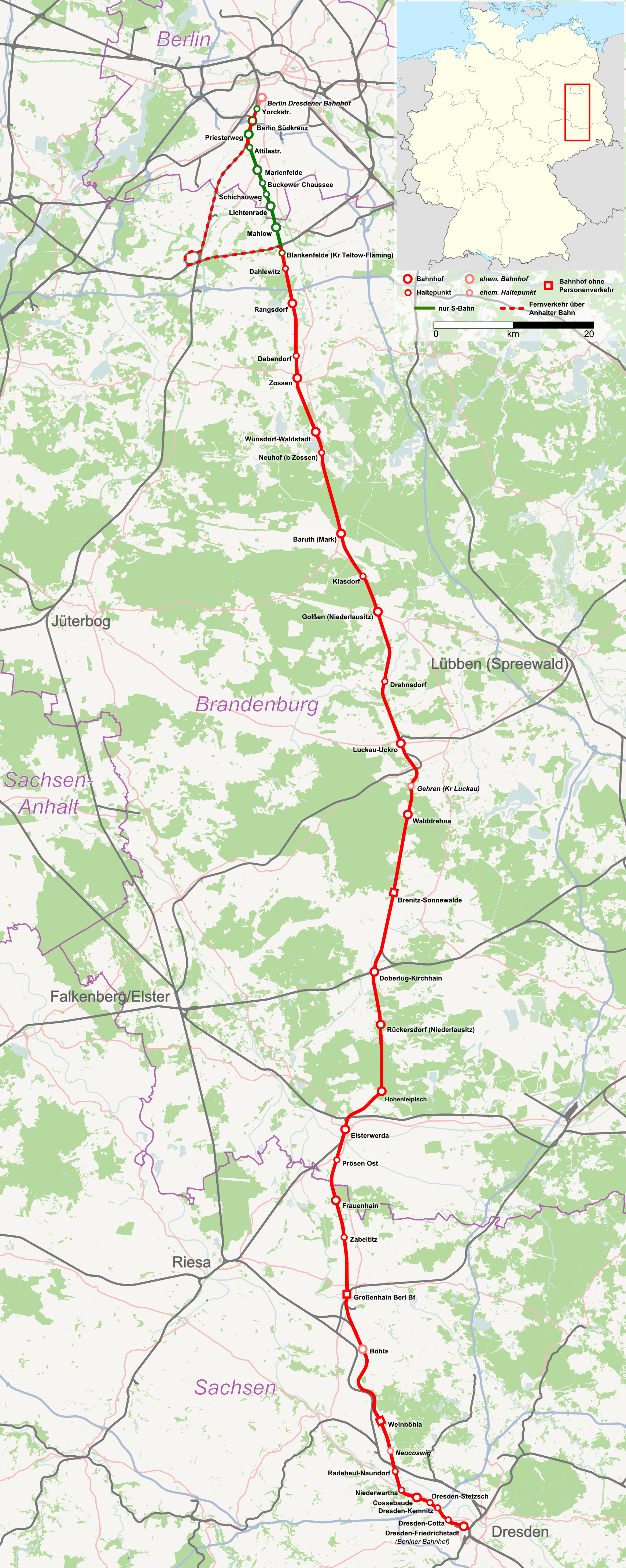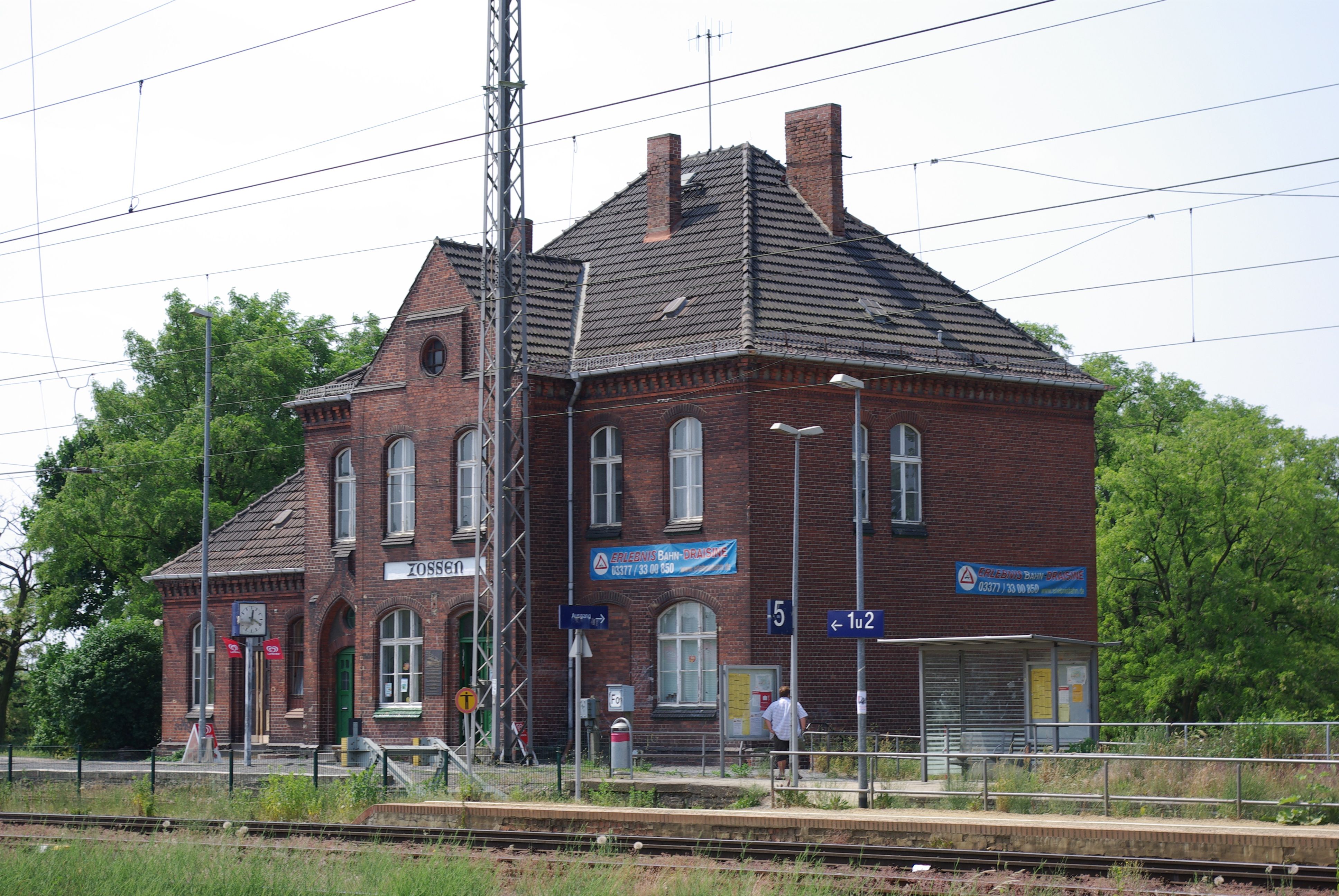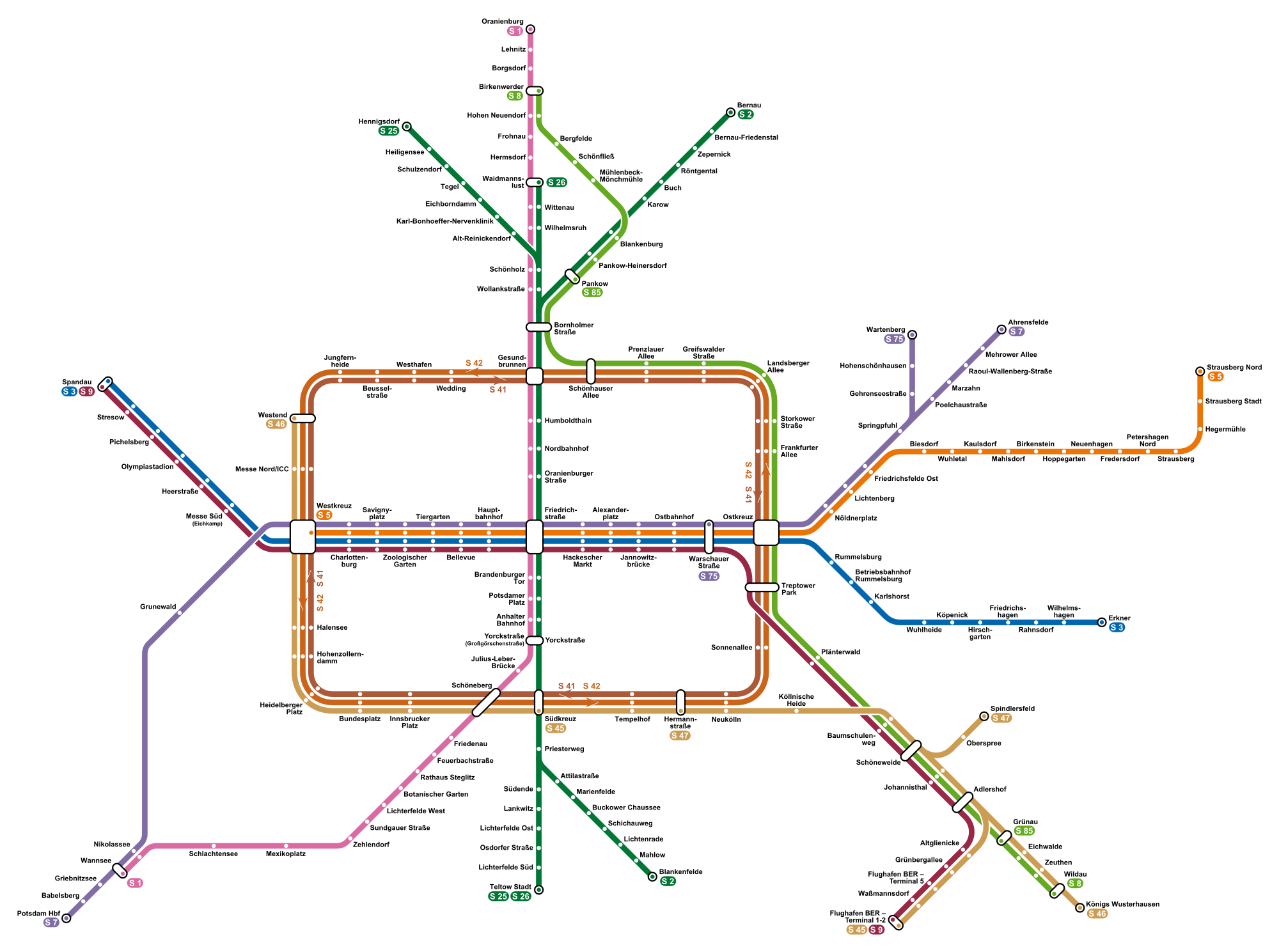|
Marienfelde
Marienfelde () is a locality in southwest Berlin, Germany, part of the Tempelhof-Schöneberg borough. The former village, incorporated according to the Greater Berlin Act of 1920, today is a mixed industrial and residential area. Geography The Marienfelde quarter borders the Tempelhof-Schöneberg localities of Mariendorf in the northeast and Lichtenrade in the southeast. In the west, it borders on Lankwitz, part of the Steglitz-Zehlendorf borough. In the south, it is bounded by the Berlin city limits and the border with the state of Brandenburg. History The medieval ''Angerdorf'' arose together with neighbouring Mariendorf during the German ''Ostkolonisation'' migration about 1220 AD, then affiliated with the Teltow estates held by the Knights Templar commandry at Tempelhof. A fieldstone church was erected around 1240 which, still preserved, is one of the oldest in the Berlin area. The settlement of ''Merghenvelde'' itself was first mentioned in a 1344 deed, after the Brandenbur ... [...More Info...] [...Related Items...] OR: [Wikipedia] [Google] [Baidu] |
Marienfelde Station
Berlin-Marienfelde station is a station and a freight yard in Berlin, Germany. It is located on the Berlin–Dresden railway line in the locality of Marienfelde, part of the Tempelhof-Schöneberg borough. The station is part of the Berlin S-Bahn rapid transit network. History The station, initially named ''Marienfelde'', opened with the Dresden Railway on 17 June 1875. A few months later, on 15 October 1875, it also became a stop on the parallel Royal Prussian Military Railway (''Königlich Preußischen Militär-Eisenbahn''), which ran from the Berlin Military station in Schöneberg to Zossen. Marienfelde station was far away from the built-up area of Berlin at that time. It stimulated the development of the ''Neu-Marienfelde'' mansion colony west of the tracks. From 1893 onwards, the station was rebuilt and extended with an island platform, which was opened in March 1903. The station has been served by third rail S-Bahn trains since May 1939. The former counter hall was partial ... [...More Info...] [...Related Items...] OR: [Wikipedia] [Google] [Baidu] |
Berlin–Dresden Railway
The Berlin–Dresden railway is a double track, electrified main line railway in the German states of Berlin, Brandenburg and Saxony, which was originally built and operated by the ''Berlin-Dresden Railway Company'' (''Berlin-Dresdener Eisenbahn-Gesellschaft''). It runs from Berlin through the southern Teltow countryside and then between Lower Lusatia and Fläming Heath through Elsterwerda and the Großenhainer Pflege countryside to Dresden. Upgrades completed in December 2017 enabled maximum speeds of . By 2020 new signalling should allow speeds of . History Up to 1945 In 1848 the Berlin-Anhalt Railway Company opened the Jüterbog–Röderau line, connecting with the Leipzig–Dresden line and creating the first direct rail link between Berlin and Dresden. In 1872 the ''Berlin-Dresden Railway Company'' was founded to build a competing a line via Elsterwerda that was shorter. This route was opened on 17 June 1875. Long-distance traffic between Berlin and Dresden was divided b ... [...More Info...] [...Related Items...] OR: [Wikipedia] [Google] [Baidu] |
Buckower Chaussee Station
Buckower Chaussee station is a station on the Berlin–Dresden railway in the locality of Marienfelde in the Berlin borough of Tempelhof-Schöneberg. It is served by Berlin S-Bahn line S2. History Buckower Chaussee station was established on the Dresden railway in Berlin east of Dorfaue Marienfelde on 15 May 1946, as it was required by the American occupation forces. This station for many years was considered to be a temporary station on the then single-track S-Bahn line. It received its current appearance during the doubling of the line between Marienfelde and Lichtenrade in the late 1980s. The architect was Rainer G. Rümmler, who also designed virtually all new U-Bahn stations in West Berlin over several decades. The detailed design is similar to the stations in Berlin-Spandau and Wittenau. The two side platforms now extend to the street of Buckower Chaussee in the north. At that end a large archway spans the platforms and tracks and draws attention to the S-Bahn station. A ... [...More Info...] [...Related Items...] OR: [Wikipedia] [Google] [Baidu] |
Terra Film
Terra Film was a Berlin-based film production company. Founded in 1919, it became one of Germany's largest film production companies in the 1930s under the Nazi regime. Corporate history The company was founded at end of 1919, initially as a limited liability company and converted into a corporation in October 1920. On 19 July 1922, it acquired the Marienfelde Studios of Eiko Film in the Marienfelde suburb of Berlin. In 1930, the Swiss Scotoni family, headed by Eugen Scotoni, acquired Terra for 1.2 million Reichsmarks. The Marienfelde Studios were then equipped for sound using the Tobis-Klangfilm system. Many of the forty films from the era of Ralph Scotoni were influenced by Nazi ideas, transfer was also on Swiss materials and locations (''William Tell'', 1934; ''The Knight of Pontresina'', 1934; ''Hermione and the Seven Law'', 1935). However, since the films lost money, the family sold its stake in Terra Scotoni film in 1935. In the wake of the nationalization of the fil ... [...More Info...] [...Related Items...] OR: [Wikipedia] [Google] [Baidu] |
Mariendorf
Mariendorf () is a locality in the southern Tempelhof-Schöneberg borough of Berlin. Geography Mariendorf is situated between the localities of Tempelhof in the north and Marienfelde and Lichtenrade in the south. To the west it shares a border with the Lankwitz locality of Steglitz-Zehlendorf, to the east with Britz and Buckow, parts of the borough of Neukölln. History Mariendorf was mentioned for the first time in a document of 1348, when it was held by the Bailiwick of Brandenburg of the Order of Saint John (the ''Johanniterorden''). The ''Johanniter'' sold Mariendorf, together with Tempelhof and Marienfelde, to the city of Berlin and Coelln in 1435. In 1800, Mariendorf had 162 inhabitants. Beginning in 1872, a ''Villenkolonie'' ("mansion colony") was developed in the south end of Mariendorf, and by 1900 the village had 5,764 inhabitants. The ''Trabrennbahn'' (harness racing track) opened in 1913, and in 1920 Mariendorf became formally amalgamated into the greater city ... [...More Info...] [...Related Items...] OR: [Wikipedia] [Google] [Baidu] |
Terra Studios
The Terra Studios or Marienfelde Studios were film studios located in the Berlin suburb of Marienfelde. The studios were originally a glasshouse constructed in 1913 by the early company Eiko Film, controlled by the producer Franz Vogel who had previously been using the Sellerstrasse Studios of Rex Film. In the early 1920s Terra Film was founded and took over the studios from the defunct Eiko. It was known as the Terra-Glashaus during these years. Jung & Schatzberg p.220 In 1930 the studio underwent major rebuilding following the acquisition of Terra by Eugen Scotoni, and was fitted for sound production using the Tobis-Klangfilm system. During the consolidation of the German film industry in the 1930s under the Nazi era, Terra rose to become one of the four major companies alongside UFA, Bavaria and Tobis. It continued producing at Marienfelde until the late 1930s when the further centralisation of German film production under the Nazi regime led to the downgrading of the stu ... [...More Info...] [...Related Items...] OR: [Wikipedia] [Google] [Baidu] |
Royal Prussian Military Railway
The Royal Prussian Military Railway (German: ''Königlich Preußische Militär-Eisenbahn''), also called the ''Königliche Militär-Eisenbahn'' (Royal Military Railway, KME), was a Prussian state railway, operated by the army, between Schöneberg (now part of Berlin) and Kummersdorf (now in the municipality of Am Mellensee), later extended to Jüterbog. History After the Franco-Prussian War, it was decided to build a line where railway troops could practise, as the strategic importance of the railways had increased considerably. On 9 January 1873, the Berlin-Dresden Railway Company (''Berlin-Dresdener Eisenbahn-Gesellschaft'') entered into a contract with the Prussian War Ministry, to build a line west of its tracks to be used exclusively by the Railway Battalion for military purposes. It was agreed on 26 February 1874 to build a 45.6 km long railway line from the ''Militärbahnhof (Schöneberg)'' (Military Station, Schöneberg) to the Artillerie-Schießplatz (artillery fir ... [...More Info...] [...Related Items...] OR: [Wikipedia] [Google] [Baidu] |
Berlin S-Bahn
The Berlin S-Bahn () is a rapid transit railway system in and around Berlin, the capital city of Germany. It has been in operation under this name since December 1930, having been previously called the special tariff area ''Berliner Stadt-, Ring- und Vorortbahnen'' (Berlin city, orbital, and suburban railways). It complements the Berlin U-Bahn and is the link to many outer-Berlin areas, such as Berlin Brandenburg Airport. As such, the Berlin S-Bahn blends elements of a commuter rail service and a rapid transit system. In its first decades of operation, the trains were steam-drawn; even after the electrification of large parts of the network, a number of lines remained under steam. Today, the term ''S-Bahn'' is used in Berlin only for those lines and trains with third-rail electrical power transmission and the special Berlin S-Bahn loading gauge. The third unique technical feature of the Berlin S-Bahn, the , is being phased out and replaced by a communications-based train control ... [...More Info...] [...Related Items...] OR: [Wikipedia] [Google] [Baidu] |
Tempelhof
Tempelhof () is a locality of Berlin within the borough of Tempelhof-Schöneberg. It is the location of the former Tempelhof Airport, one of the earliest commercial airports in the world. The former airport and surroundings are now a park called Tempelhofer Feld, making it the largest inner city open space in the world. The Tempelhof locality is located in the south-central part of the city. Before Berlin's 2001 administrative reform, the area of Tempelhof, together with the localities of Mariendorf, Marienfelde, and Lichtenrade, constituted a borough of its own, also called ''Tempelhof''. These localities grew from historic villages on the Teltow plateau founded in the early 13th century in the course of the German Ostsiedlung. History ''Tempelhove'' was first mentioned in a 1247 deed issued at the Walkenried Abbey as a ''Komturhof'' (''commander's court'', the smallest holding entity of a military order) of the Knights Templar, whose leadership and many fellow knights had be ... [...More Info...] [...Related Items...] OR: [Wikipedia] [Google] [Baidu] |
Lankwitz
Lankwitz () is a German locality (''Ortsteil'') within the borough (''Bezirk'') of Steglitz-Zehlendorf, Berlin. Until 2001 it was part of the former borough of Steglitz. History The locality was first mentioned in 1239 with the name of ''Lankowice''. Autonomous Prussian municipality of the former Teltow district, Lankwitz was incorporated into Berlin in 1920 as part of the district Steglitz, with the "Greater Berlin Act". Geography Lankwitz is situated in the southern suburb of Berlin, close to the borders with the Brandenburg. It borders with the localities of Steglitz, Lichterfelde, Mariendorf, Marienfelde (both in Tempelhof-Schöneberg district) and, in a short point represented by a bridge over the Teltowkanal, with Tempelhof.Source: "ADAC StadtAtlas - Berlin-Potsdam". ed. 2007 - p. 196 - The Teltowkanal also remarks the boundary between Lankwitz and Steglitz. Transport The locality is served by ''S-Bahn'' at the rail station of Lankwitz (lines S25 and S26). The S2 only ... [...More Info...] [...Related Items...] OR: [Wikipedia] [Google] [Baidu] |
Lichtenrade
Lichtenrade () is a German locality (''Ortsteil'') within the borough (''Bezirk'') of Tempelhof-Schöneberg, Berlin. Until 2001 it was part of the former borough of Tempelhof. History The locality was first mentioned in 1375, named ''Lichtenrode''. Autonomous Prussian municipality of the former Teltow district, Lichtenrade was incorporated into Berlin in 1920, with the "Greater Berlin Act". During World War II, a branch of the Sachsenhausen concentration camp was located in this locality. After 1941, prisoners of war from Ukraine were interned in the camp. During the Cold War it was a part of West Berlin bordering with East Germany. Its long boundary with Brandenburg was surrounded by the Berlin Wall from 1961 to 1989. Geography Located in the southern suburb of Berlin, it is one of the southernmost areas of the city, largely bounded by the Brandenburger municipalities of Schönefeld (Dahme-Spreewald district), Blankenfelde-Mahlow and Großbeeren (both in Teltow-Fläming district) ... [...More Info...] [...Related Items...] OR: [Wikipedia] [Google] [Baidu] |
Tempelhof-Schöneberg
Tempelhof-Schöneberg () is the seventh borough of Berlin, formed in 2001 by merging the former boroughs of Tempelhof and Schöneberg. Situated in the south of the city it shares borders with the boroughs of Mitte and Friedrichshain-Kreuzberg in the north, Charlottenburg-Wilmersdorf and Steglitz-Zehlendorf in the west as well as Neukölln in the east. Subdivision Tempelhof-Schöneberg consists of six localities as from north to south: * Schöneberg * Friedenau * Tempelhof * Mariendorf * Marienfelde * Lichtenrade Demographics As of 2010, the borough had a population of 335,060, of whom about 105,000 (31%) were of non-German origin. The largest ethnic minorities were Turks constituting 7% of the population; Poles at 4%; Yugoslavians at 3%; Arabs at 2.5%; Afro-Germans at 1.5% and Russians at 1.3%. Politics District council The governing body of Tempelhof-Schöneberg is the district council (''Bezirksverordnetenversammlung''). It has responsibility for passing laws and electing th ... [...More Info...] [...Related Items...] OR: [Wikipedia] [Google] [Baidu] |





